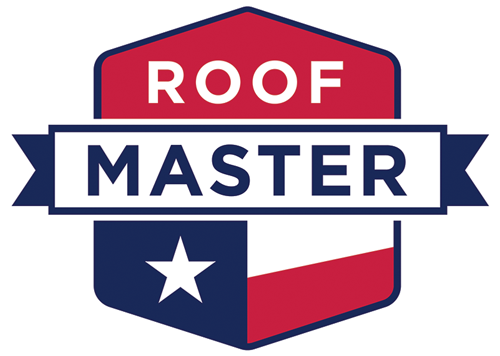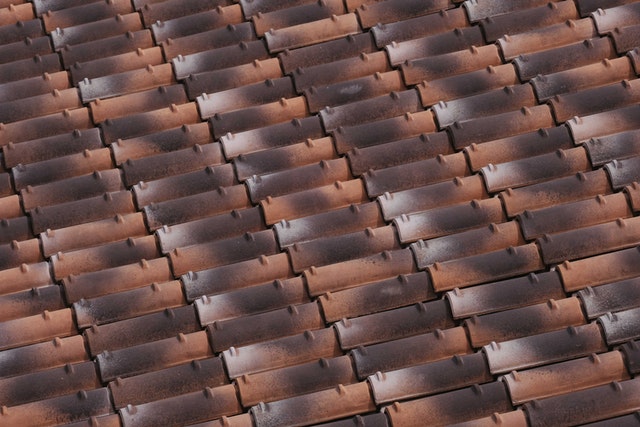It feels good to have a home with a great appearance. Most homeowners would pay anything to have a roof that forever looks new. However, if you have a shingled roof, you may sometimes have to deal with black streaks on the roof.
Those black streaks are a type of roof algae prevalent on roofs surrounded by mature trees. It’s possible to prevent and eliminate black lines on your shingled roof. There are plenty of resources to help you, but it’s better to consult a roofing expert directly.
In the course of trying to prevent or eliminate the black streaks on your roof, you may wonder what causes black streaks on roof shingles in the first place. This article by our team at Roof Master will help you discover four known causes for black streaks on your roof shingles.
What Causes Black Streaks On Shingles?
Black streaks make your roof shingles look ugly, necessitating you to remove them to restore your home’s beauty. Continue reading to learn the answer to the question, “what causes dark stains on roof shingles?”:
1. Algae
Are you wondering what the black streaks on roof shingles are? The answer is that the black spots are most likely a blue-green algae species after it has accumulated and formed a dark outer coating. The algae thrive in the presence of limestone shingles.
The black markings from this algae get worse over time as it traps moisture which causes the shingles to age prematurely and lose their granules. Removing the algae as early as you notice is the only way to keep your shingles from rotting.
One way to get around the growth of algae on your roof is by installing algae-resistant shingles. Other solutions are installing zinc or copper strips on top of the shingles. The strips react with rainwater to produce a solution that prevents more algae growth.
2. Mold and Mildew
Another cause of black streaks on your roof could be mold and mildew. Like algae, moss and mildew are botanical growths that develop in the presence of moisture, such as when it’s rainy and humid.
The damp conditions in your roof facilitate the growth of mold and mildew. Mold and mildew grow fast, so you have to be quick to get rid of them. Otherwise, you will have to start planning for roof repairs and replacements.
When cleaning your roof to get rid of black streaks caused by mold and mildew, you mustn’t use high-pressure water. Using high-pressure water will cause damage to the shingles, and you could end up with a structural problem from leaks.
3. Dirt
Your roof is bound to collect dirt and debris stains that the wind blows. The debris can be leaves and branches which rot and dry, leaving streaky marks on your roof shingles.
You can clean black streaks caused by dirt collection with simple tools like a ladder and rubber gloves. Again, avoid using pressurized water as it will only cause more harm.
4. Weather
Your roof shingles could have black streaks due to your location. The algae that turns into said black streaks thrive in the coastal climates where it’s warm and humid. This climate, combined with cheap roof shingles, guarantees that you will have black lines on your roof.
The most shaded parts of the house in coastal climatic regions get the most appearance of black streaks.
How And Why Do Roof Shingles Get Algae?
The spores that contribute to algae growth that later become the black streaks on your roof shingles are airborne. Also, they attach themselves to animals and clothing; it’s easy for them to spread from neighborhood to neighborhood.
It’s become common for shingles to have black streaks, unlike how it was, say, 20 years ago. Instead of using asphalt to make shingles, manufacturers have found more success using fiberglass and crushed limestone.
Limestone encourages the growth of algae. It provides nutrients for the algae.
Tips on How to Prevent and Eliminate Black Streaks on Your Roof Shingles
You can try all the recommended tactics for preventing black streaks from developing on your roof shingles, but there are no permanent solutions. The best you can do is clean and maintain your roof and hope for the best.
Try doing the following to reduce the chances of black streaks developing on your roof.
Maintain Your Environment
Start by trimming tree branches around your roof to ensure that it receives plenty of sunlight. Also, doing so will reduce the accumulation of debris. The lack of waste and rotting material creates an unfavorable environment for algae to thrive.
Ensure that you have proper drainage in your gutters as well. There’s always the risk of clogged gutters allowing water to drain into the lower roof and accommodate mold and mildew growth on the shingles.
Install Copper or Zinc Strips on the Roof
Install the strips near the roof’s peak to ensure a part is exposed to rain. Both strips react with rainwater to kill algae molecules while washing down to kill lurking algae. It may not be an absolute solution, but it provides additional protection for the roof.
Install New Shingles
You could replace your current roof shingles with copper ones. Please take it as only optional and not necessary. It would work, especially if you have an old roof. You’d kill two birds with a stone, eliminate black streaks and replace an old roof.
Clean Your Roof
To clean your roof shingles, you need bleach, water, and trisodium phosphate. First, you will mix them and spray the mixture on the roof, starting at the top. The process ends with you rinsing it off with a regular garden hose.
Conclusion
It is unsightly to have black streaks on your shingled roof. You can take control of the situations and eliminate the black streaks to keep them from coming back. Ensure that you learn all you can about things that could go wrong when you have a shingles roof.
Now that you know what causes black streaks on roof shingles, you should prepare to mitigate the issue. Hire a professional when you decide to get rid of the black streaks. Any operations on your roof are high risk, thus requiring experienced personnel.



